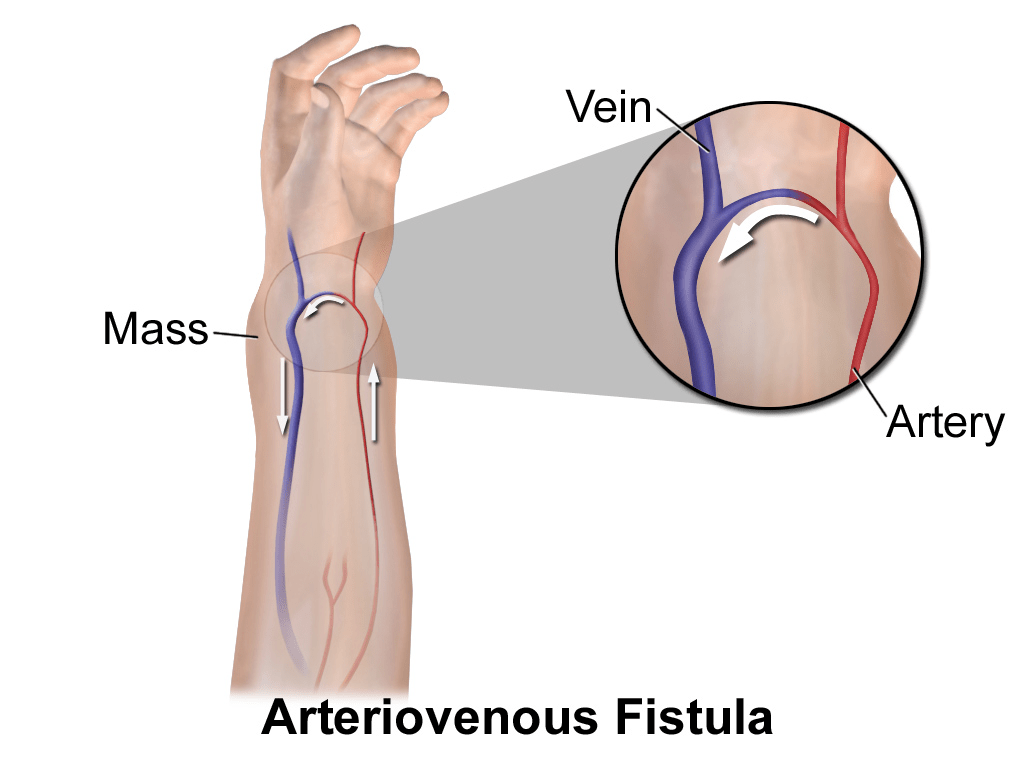
11 Oct The main guidelines for the management of fistula-related infections
Edited by Dr. Marisa Pegoraro, a nurse specializing in haemodialysis at the Niguarda Ca’ Granda Hospital, a member of the EDTNA / ERCA scientific association, former President of the SIAN scientific association.
It should never happen, but unfortunately arteriovenous fistulas sometimes become infected or aneurysms form.
Dr. Pegoraro explains very clearly what to do in these cases and, in general, how to keep this important access in good condition.
A fistula is a communication between an artery and a vein, usually on the forearm, sometimes on the arm.
The connected vein becomes larger, more palpable and stronger. It changes very quickly in the first few weeks and months, and continues its subtle change afterwards.
The surgical procedure for creating fistula allows the superficial veins to become enlarged and more resistant, so that they can withstand the insertion of medium-large needles, thereby making a larger amount of blood available for dialysis.
The way in which the needles are inserted, causes deformations that are more or less evident. Moreover, as we are all similar to one another but all different, also the way in which these alterations appear depends on our genetic make-up, on our type of skin and subcutis and on our age and gender.
The most evident type of alteration is localised swelling, known as “aneurysm”, which forms in correspondence with the areas that are punctured the most.
The only way to limit aneurysms is to puncture the vein according to a specific pattern.
Infection of the fistula, on the other hand, is an unfortunate event that occurs when the body is unable to counteract germs in specific locations.
An infection can be recognized because it manifests itself with pain, redness and heat, which can be superficial, at the needle insertion point.
In this case, it is very important NOT to puncture the red area, but to disinfect it and allow it to rest.
If, on the other hand, the redness also affects the surrounding areas and is deeper, in addition to not puncturing the area, it should be treated with an oral antibiotic or, if the infection is more aggressive, by administering an intravenous antibiotic.
To prevent fistula infection, it is important to carry out proper arm and hand hygiene, both for patients and staff, and to comply with the correct methods of disinfection and puncture.
An infection may develop following a diagnostic or surgical procedure. In these cases, the antibiotic should be administered immediately via the venous route.
Avoiding infections and aneurysms allows you to keep the fistula in good condition from an aesthetic point of view, but above all, it does not affect its functionality: the blood circulates linearly, the skin remains healthy, supple and structured, the needle punctures are not very visible and remain concealed.


